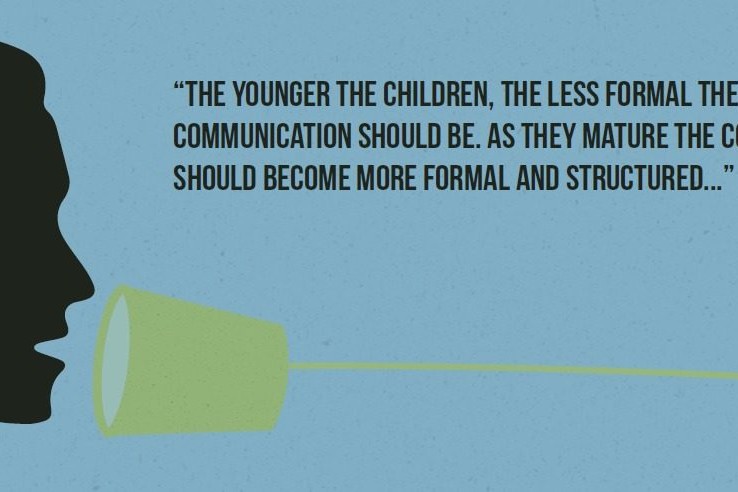The art of communication
In part two of a series, communication and starting early with discussion is important for successful family farm succession, Peter Flannery writes.

There are four pillars to any successful succession plan. They are:
- Build a strong business first (October issue)
- Communication
- Fair comes before equal
- Understanding the difference between ownership and control.
Communication must be at the heart of any plan. The purpose of the communication is to “flesh out” the underlying needs of the entire family.
Unless there is a strong understanding of everyone’s thoughts, needs and vision for themselves, the family and the family business, a poorly communicated plan, or even the lack of a plan, will potentially lead to conflict within the family.
Lack of communication creates a vacuum of knowledge and understanding. It is a scientific fact that a vacuum will not stay empty for long. If a vacuum cannot be filled with facts, it will be filled with assumptions masquerading as fact. Perception is reality.
If the decision makers do not consult with the family, conflict can occur in one of three ways:
- The decision makers assume they know what the family’s thoughts or needs are and put in place a plan that does not meet them.
- If there is no communication with the family and/or a plan is not disclosed, the family will make their own assumptions of what is happening and will react accordingly. Their assumptions may be quite wrong and therefore their resulting behaviours can become inappropriate.
- Thirdly, if a plan is disclosed, but with no explanation of the reasons behind it, family may misinterpret the intent.
The sooner the communication starts the better. Children are never too young to be schooled in the “way of the family”. So, while you cannot set goals for your children, you can mould their values. A strong family influence will help mould values that reflect the family’s values. The better this is done, the lower the probability of having a few black sheep running around the back paddock.
The younger the children, the less formal the communication should be. As they mature the communication should become more formal and structured. For many families there has been little or no communication regarding business succession.
For example, if I am the likely successor, who has spent the last five years helping build the business, and I have no knowledge of what mum, dad and my siblings are thinking, and vice versa, we will all fill our heads with our own thoughts of what others may be thinking.
The danger is this will lead to misunderstanding, suspicion, jealousy and ultimately conflict. If this goes on unchecked the situation will become untenable.
There is no doubt communication can be difficult. Most businesses will have some financial constraints particularly if the business is small and the family large. Difficult conversations handled well and at the appropriate time can build respect and understanding. Difficult conversations that don’t happen only add fuel to a n eventual fire.
Don’t let the horse of reason bolt
Most advisers have dealt with families in this situation. Conflict has arisen, most probably through poor communication. By the time the adviser arrives on the scene all that remains is for the adviser to shut the stable door because the “horse of reason” has long since bolted and can be seen disappearing over the horizon. Shut the door, he won’t be back.
Once perceptions become entrenched, they turn into reality and can be incredibly difficult to turn around.
By the time a natural successor (or two) in waiting has put down their own roots, with a partner and family, the need to start communicating is becoming increasingly urgent.
You don’t necessarily need an adviser or independent to be part of the communication process. However, the later the start the greater the value an independent can add. They will help remove the fear of starting and can filter and manage any unrealistic viewpoints.
So, what is communication? My good friend Mr Google provides the following:
“Communication is the act of giving, receiving, and sharing information — in other words, talking or writing, and listening or reading. Good communicators listen carefully, speak or write clearly, and respect different opinions.”
The three key words in that explanation are “giving,” “receiving” and “sharing”. Someone once told me we have two ears and one mouth. A good communicator uses them in that proportion. In other words, listen twice as much as you speak.
A good communicator and/or leader doesn’t just tell people what is happening. They listen to what people have to say, take on other viewpoints, base their judgements on what they have heard. They don’t necessarily have to take on board everything they have heard, but they need to at least hear it. Furthermore, not only do the family need to be heard but they need to know they have been heard.
Listening, an underrated skill
Stephen Covey, an American educator, author and businessman developed what he calls “The Seven Habits of Highly Effective People”. Habit number five is “Seek first to understand, then to be understood.” That is the art of a good communicator.
How do you seek to understand? You ask questions and you listen to the answers. Listening is an understated skill. We learn to speak, read, and write at an early age, but we are not taught to listen, we are told.
Asking questions, listening and learning from the answers and then weighing up your response is not a weakness.
“No one is going to tell me what to do!” Asking questions and listening and learning from the answers is in fact a massive strength. However, you also need to demonstrate you have heard and show you understand what family members are saying before you make yourself understood.
For example:
“Yes, I hear and understand your point of view. You believe that one of your siblings is going to be treated more favourably than the others and you believe that is unfair and I understand that. However, what I want you to understand is this family would not be in the fortunate position it is in if your grandparents had not treated me favourably 40 years ago and we have all benefited from that, you included.
“This has been our home, yours included, and it is important it is retained, and to achieve that we cannot treat everyone equally. You will be helped, but in a different way, and we need to work together to make sure it is fair to you and everyone else. Do you understand?”
I realise this example is a bit scripted or contrived. Difficult conversations seldom pan out exactly as we would like. However, my point is, this example is better than simply saying “It’s my decision to make, I’ve made it and I don’t want to talk about it.”
The eventual outcome of the conversation in the above example will depend on the attitude of the person receiving it, and as discussed attitudes need to be moulded from an early age. Difficult conversations are not easy, and some are better at it than others, but shying away from them will only make matters worse. You need to talk about issues and outcomes before they become difficult, and attitudes become entrenched.
It’s a bit like planting a tree. The best time to start communicating was 20-30 years ago. The next best time to start is now.
• Peter Flannery, of Farm Plan Ltd, is a Southland and Otago-based agribusiness consultant, specialising in business planning, financial management and family succession.




